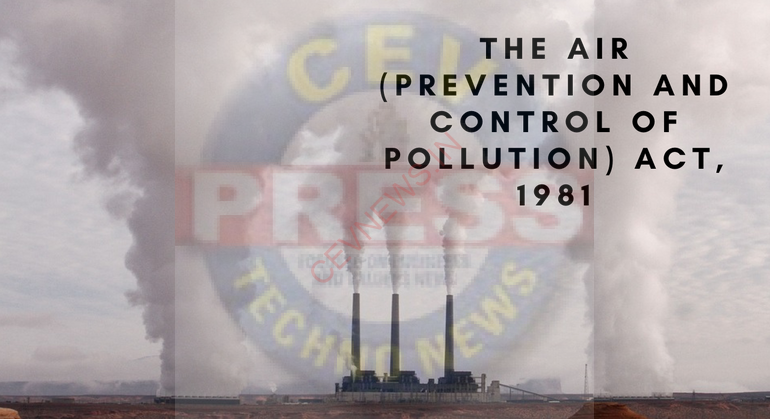This Act was promulgated in 1981. It is, therefore, known as The Air (Prevention and Control of Pollution) Act, 1981. It was amended in 1987.
Objectives
This Act is meant to serve the following objectives.
- prevention, control and abatement of air
- maintaining the quality of air
- establishment of Boards for the prevention and control of air-pollution.
Definition of pollution under this Act
Air-pollution means the presence in the atmosphere of any air pollutant.‘Air-pollutant’ means any solid, liquid or gaseous substances present in the atmosphere in such concentrations as may be or tend to be injurious to human beings or other living creatures or property or environment.
Constitution and functions of Central Board
To have an integrate approach for tackling the problems related to pollution, this Act provides that the Boards for the prevention and control of water pollution, constituted under Section 3 and 4 of the Water (Prevention and Control of Pollution) Act, 1974, shall also act as Air Pollution Control Boards under this Act as:
- The central Board for the Prevention and Control of Air Pollution under Section-3.
- The State Board for the Prevention and Control of Air Pollution under Section-4
Powers of the Board
Power to declare air pollution control areas.
Power to establish standards for emission of air pollutants from
Under Section 20.2 the Boards have the power to ensure that the standards for emission of air pollutants, from automobiles laid down by the State Board under clause (vii} of sub-section (I) of Section 1 7, are complied with.
- Power-to restrict use of certain industrial plants. Section 21.3 of this Act, no person shall without the previous ·consent of the State board, establish or operate any industrial plant in an Air Pollution Control Area.
- Power of entry and inspection: Under Section 24.5 of this Act any person empowered by a State Board shall have the right to enter any place for
- Performing any of the functions of the State Board entrusted to him
- Examining and testing any control equipment, industrial plant, record, register, documents etc.
- Power to take samples. Under section 26 of this Act, any officer empowered by the State Board shall have the power to take, for the purpose of analysis, samples of air or emission from any chimney, flue or dust etc. and send the same for the analysis to the laboratory established or recognized by the State Board.
Penalties for Violation of Provisions Under the Act
Except for the fact that there is no provision for publication of names of offenders under this Act, the penalties for defaults or violations or the provisions under the Act are the same as under the Water Act.

